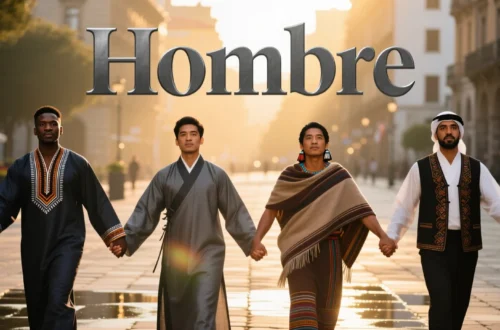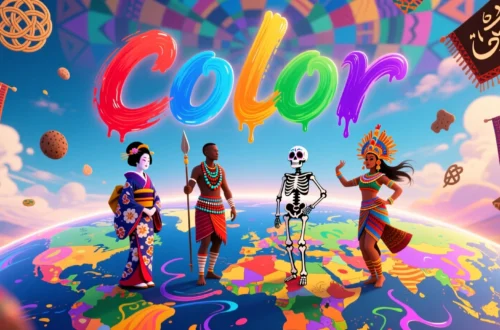Love has a way of weaving itself into the fabric of every language, not just as a word but as vivid expressions that capture its essence. I once overheard my Spanish neighbor say, “Estar en las nubes,” describing a friend so smitten they were “in the clouds.” It struck me how perfectly this idiom painted love’s dizzying joy.
Across the globe, idioms about love reflect the heart of each culture, blending humor, poetry, and wisdom. These phrases, often untranslatable in their full depth, reveal how love shapes human experience. Let’s journey through idioms about love in various languages, uncovering their meanings and the cultural threads that tie them to the universal emotion of love.
Reference Table: Love Idioms in Different Languages
| Language | Idiom | Literal Translation | Meaning & Cultural Insight |
|---|---|---|---|
| French | Avoir le cœur sur la main | Have the heart on the hand | To be generous and loving, reflecting France’s romantic emphasis on open-heartedness. |
| Spanish | Estar en las nubes | To be in the clouds | Being so in love you’re distracted, common in Latin cultures’ passionate view of love. |
| Italian | Avere un cuore di pietra | To have a heart of stone | Describes someone incapable of love, tied to Italy’s expressive emotional culture. |
| German | Schmetterlinge im Bauch | Butterflies in the stomach | Feeling nervous excitement in love, reflecting German precision in describing emotions. |
| Mandarin | Xīn dòng (心动) | Heart moves | Feeling your heart stirred by love, tied to Chinese emphasis on emotional depth. |
| Hindi | Dil se dil tak | From heart to heart | A deep emotional connection, popular in India’s poetic and Bollywood culture. |
| Japanese | Koi no yokan | Premonition of love | Sensing love before it begins, reflecting Japan’s subtle, intuitive approach to romance. |
| Korean | Nunbit sarang (눈빛 사랑) | Love in the eyes | Falling in love through a glance, tied to Korea’s romantic K-drama culture. |
| Arabic | Qalbī ‘alā qalbak | My heart is on your heart | Deep emotional alignment, common in Arab poetry’s passionate expressions. |
| Swahili | Moyo wangu ni wako | My heart is yours | A declaration of devotion, reflecting East African emphasis on communal bonds. |
| Zulu | Inhliziyo yam’ iyakuthanda | My heart loves you | A heartfelt expression, rooted in South Africa’s focus on emotional sincerity. |
| Yoruba | Ifẹ lọ s’ọkan mi | Love goes to my heart | Love that deeply moves you, tied to Nigeria’s spiritual view of emotions. |
| Maori | Aroha atu, aroha mai | Love given, love received | Reciprocal love, central to Maori values of mutual care and connection. |
| Hawaiian | Aloha aku, aloha mai | Love given, love returned | Mutual love, reflecting Hawaiian emphasis on harmony and reciprocity. |
| Cherokee | Adageyudi galvquodi | Love that is cherished | Deep, treasured love, tied to Cherokee focus on family and spiritual bonds. |
European Languages
European idioms about love blend romance with vivid imagery. In French, “avoir le cœur sur la main” (have the heart on the hand) describes someone who loves generously, mirroring France’s cultural celebration of open-hearted romance. For example, Spanish “estar en las nubes” (to be in the clouds) captures the dreamy distraction of love, a phrase heard across Spain and Latin America. Meanwhile, Italian “avere un cuore di pietra” (to have a heart of stone) warns of those unmoved by love, reflecting Italy’s emotional expressiveness.
In German, “Schmetterlinge im Bauch” (butterflies in the stomach) vividly describes the nervous thrill of new love, showing Germany’s knack for precise emotional imagery. Additionally, Portuguese “cair de amores” (to fall in love) in Brazil evokes a sudden, passionate plunge, often sung in bossa nova. These idioms, rooted in shared Latin or Germanic origins, highlight Europe’s diverse yet interconnected views on love’s joys and challenges.
Asian Languages
Asia’s love idioms reflect deep cultural values, from passion to intuition. For instance, Mandarin “xīn dòng” (heart moves) describes the flutter of falling in love, emphasizing emotional depth in Chinese culture. In Hindi, “dil se dil tak” (from heart to heart) signifies a profound connection, a staple in India’s poetic and cinematic expressions of love.
Similarly, Japanese “koi no yokan” (premonition of love) captures the subtle sense that love is destined, reflecting Japan’s nuanced approach to romance. In Korean, “nunbit sarang” (love in the eyes) highlights love sparked by a glance, popularized by K-dramas across over 20 countries. Furthermore, Arabic “qalbī ‘alā qalbak” (my heart is on your heart), used in nations like Egypt and Morocco, conveys deep emotional unity, rooted in poetic traditions. From Thai “rak tae jai” (true heart love) to Vietnamese “yêu từ cái nhìn đầu tiên” (love at first sight), Asian idioms weave love with cultural values of duty, destiny, and passion.
African Languages
Africa’s love idioms emphasize sincerity and community. For example, Swahili “moyo wangu ni wako” (my heart is yours), spoken in Kenya, Tanzania, and Uganda, expresses total devotion, reflecting East African values of unity. Likewise, Zulu “inhliziyo yam’ iyakuthanda” (my heart loves you) in South Africa conveys deep sincerity, often used in romantic or familial contexts.
In Yoruba, “ifẹ lọ s’ọkan mi” (love goes to my heart), used in Nigeria and Benin, highlights love’s emotional depth, tied to spiritual traditions. Additionally, Amharic “yene qonjo fəqər” (my beautiful love) in Ethiopia adds a poetic flair, while Hausa “soyayya ta ji ni” (love touches me) in Nigeria and Niger emphasizes emotional impact. Across over 20 African nations, from Shona “moyo wangu wakadini zvako” (my heart is yours) in Zimbabwe to Twi “me dɔ wo” (I love you) in Ghana, these idioms root love in community and heartfelt expression.
Indigenous & Island Languages
Indigenous and island cultures offer poetic idioms about love, often tied to reciprocity and spirituality. For instance, Maori “aroha atu, aroha mai” (love given, love received) in New Zealand emphasizes mutual care, central to cultural values like manaakitanga. Similarly, Hawaiian “aloha aku, aloha mai” (love given, love returned) reflects Hawaii’s focus on harmony, used across Pacific Island communities.
In Cherokee, “adageyudi galvquodi” (love that is cherished) in the U.S. highlights treasured bonds, often spiritual in nature. Likewise, Samoan “alofa ia te oe” (love to you) in Samoa conveys heartfelt devotion, emphasizing generosity. In Inuktitut (Canada), “piqpa qamutiik” (love like a sled) suggests love’s steady pull, rooted in Arctic life. From Guarani “ayvu reko” (love’s essence) in Paraguay to Chamorro “amå hao” (love you) in Guam, these idioms across over 20 cultures frame love as a communal and spiritual force.
Cultural Insights
Love idioms evolve with history, reflecting cultural values and traditions. In ancient Greece, phrases like “eros strikes like lightning” shaped Western views of passionate love. In Sanskrit texts, “prema’s flame” linked love to divine connection in India. Similarly, Arabic poetry uses “hubb” to blend romantic and spiritual devotion, influencing idioms across over 20 countries.
In African cultures, idioms like Swahili’s “love is fire” emphasize visibility and community, while East Asian phrases, influenced by Confucianism, focus on duty, as in Mandarin’s “heart moves.” Pacific Island idioms, like Hawaiian’s “aloha mai,” highlight reciprocity, rooted in cultural harmony. These expressions show how love, while universal, takes on unique meanings through each culture’s history, religion, and social values, creating a rich global tapestry.
Proverbs About Love
Love idioms often inspire proverbs that carry cultural wisdom:
- French: “Love blinds the eyes but opens the heart.” This reflects France’s view of love’s transformative power.
- Hindi: “Love travels from heart to heart.” India celebrates love’s deep emotional connection.
- Swahili: “Love is a river; it flows where it wills.” East Africa sees love as unstoppable and free.
- Japanese: “Love sees through walls.” Japan emphasizes love’s ability to transcend barriers.
- Yoruba: “Love builds the heart’s home.” Nigeria views love as a foundation for life.
- Maori: “With love given, love grows.” New Zealand highlights love’s reciprocal nature.
These proverbs reveal love’s universal role in shaping relationships and cultural values.
FAQs
Why do love idioms sound similar across languages?
Shared linguistic roots, like Latin influencing Romance languages, create similarities. Cultural exchanges through trade or conquest also spread phrases, like Arabic idioms across the Middle East.
What is the oldest known love idiom?
Sumerian texts from 3000 BCE use “ki” in phrases like “heart’s joy,” suggesting love’s emotional spark, an early precursor to modern idioms.
How do cultures use love idioms differently?
Western idioms often focus on romance’s thrill, like German’s “butterflies.” Asian idioms emphasize destiny or duty, like Japanese “koi no yokan.” African idioms highlight community, and indigenous phrases focus on spiritual bonds.
Conclusion
Love idioms, from French’s “heart on the hand” to Maori’s “love given, love received,” paint a vivid picture of how cultures express this universal emotion. Each phrase carries a unique cultural hue, yet all speak to love’s power to connect us. These idioms remind us that love, in all its forms, is a shared human language. What’s a love idiom in your culture, and what story does it tell? Share your thoughts below and let’s celebrate the global language of love!





